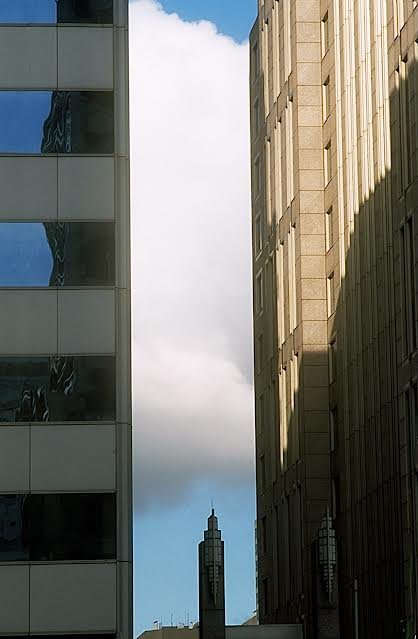The Architecture of Cities: Chicago
The heart of my architecture of cities series is akin to the tree of life: my eyes trace architecture’s family tree. Ultimately I want to be like Darwin, but an urban botanist seems right. I visit a city, and many times revisit cities with a mission at times to photograph a revitalization of a neighborhood that has been nurtured and stimulated. I am equally a witness to the demise of urban life that dies alone.
Botany is the scientific study of plants, including their physiology, structure, genetics, ecology, distribution, classification, and economic importance. It is the examination of plant life of a particular region, habitat or geological region. Substitute geographical for geological then you will know what my camera sees. Most people assume I am merely glorifying what already exists. But my camera comes with a DNA. It incorporates the knowledge of the past and the present with a peek into a future. Plant life, and urban life celebrate those identities.
I discovered there was a city named Chicago a few years after I was born.
Try to imagine eyes listlessly staring to the ceiling and above to the stars. Imagine the stars dancing within your galaxy of dreams. Imagine your Baseball heroes positioned on nine stars against their adversaries also positioned on opposing nine stars. Then just possibly you might be able to envision this nearly five year old listening with his transistor radio under the sheets to the Los Angeles Dodgers versus the Chicago White Sox World Series.
Six years later the Chicago Cubs, were playing the Los Angeles Dodgers. I watched from the third base side field level, row “r” as the phenomenal Sandy Koufax pitched a “Perfect Game”.
Baseball was my introductory class to geography.
About the same time, I learned that my mother’s side of our family migrated from Chicago to Los Angeles in the 1930’s. Before that the family name had immigrated from an area they called “Beyond the Pale”: Today “The Pale” is part of the embattled Ukrainian region.
Three years later this coming of age teen watched on television as Mayor Richard Daly’s brutal police force pummeled the Democratic convention protestors. From baseball to my mother’s origin and then to a political maelstrom, Chicago became a real life place.
Detail from Jeanne Gang’s Aqua
One day a massive avalanche of destruction hit my present hometown of New York.
For about 10 days I suffered the ambulance’s sirens and the notion of death before my eyes. My wife and I fled the tormenting sounds of death and found respite. Yes, Chicago. I remember landing in O’Hare airport. It was almost empty. We felt protected.
Art Institute of Chicago: Mondrian
aqua
There was something about how we felt welcomed by everyone we met. We were from New York and the city was going to protect us. From the first day to the final day of refuge, when we left the restaurant Spiaggia (supposedly President Obama’s favorite) Chicago has remained among my favorite friends.
Merchandise Mart
I have since made a few visits to photograph architecture. My subjects included a building for David Childs from the firm SOM. I also danced for a few days with Jeanne Gang’s Aqua building.
I say danced, because I found numerous two-steps with the light that actually made me laugh and dance. Anytime light is your partner, there can be no down side.
Stanley Tigerman’s Holocaust Memorial in Skokie
I met up with Stanley Tigerman. What a prince among architects he was. I must say that after finding the architect such a joy, his Illinois Holocaust Museum was sadly a beautiful display of what carnage means to any living soul. The heart stands apart from your body and you quietly grieve and think, an architect can in the best way draw the shades on your soul.
Finding my last and lasting days among Chicago’s architecture is a reason to believe in a future, any future.
Chicago Cubs






